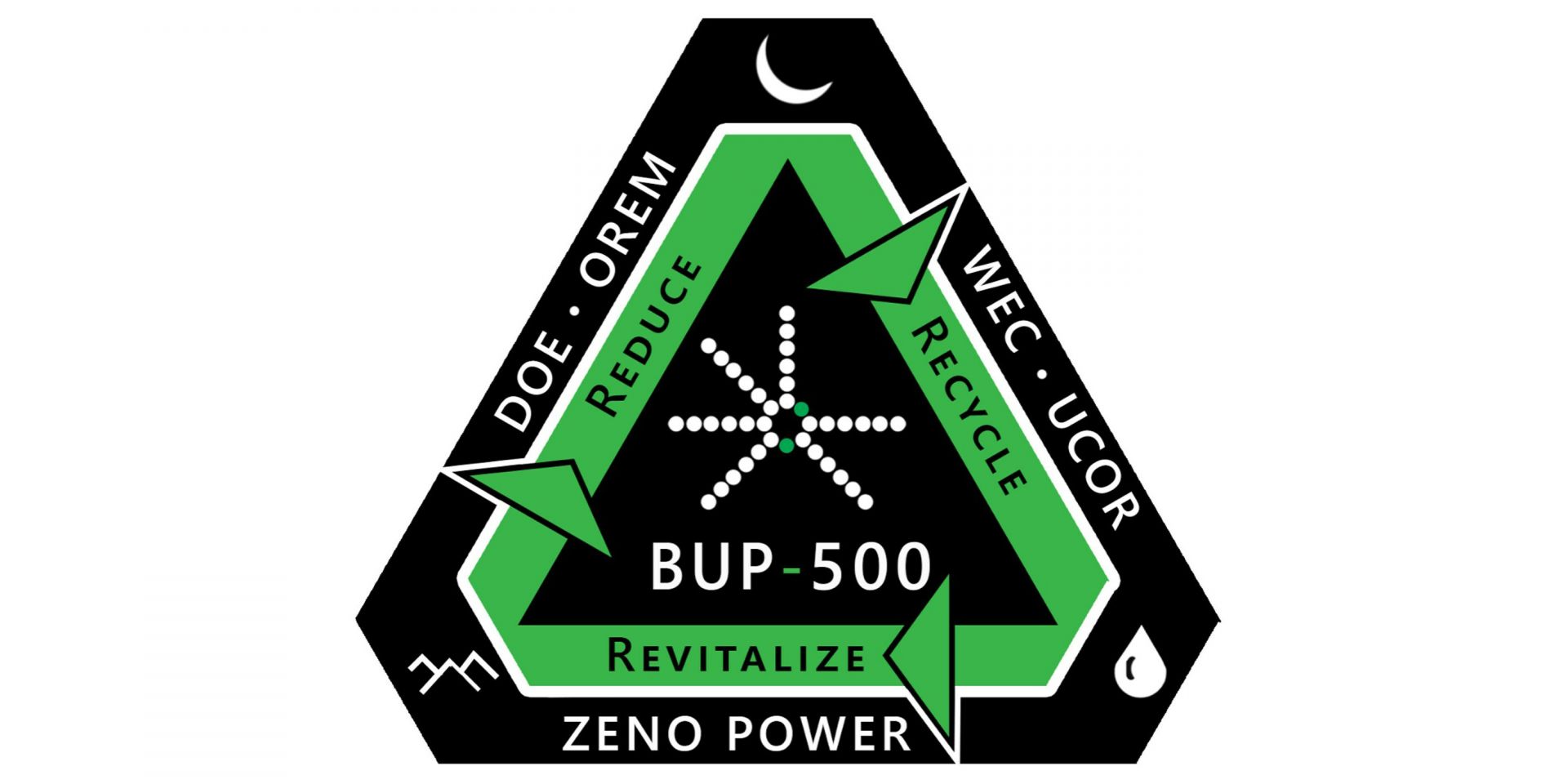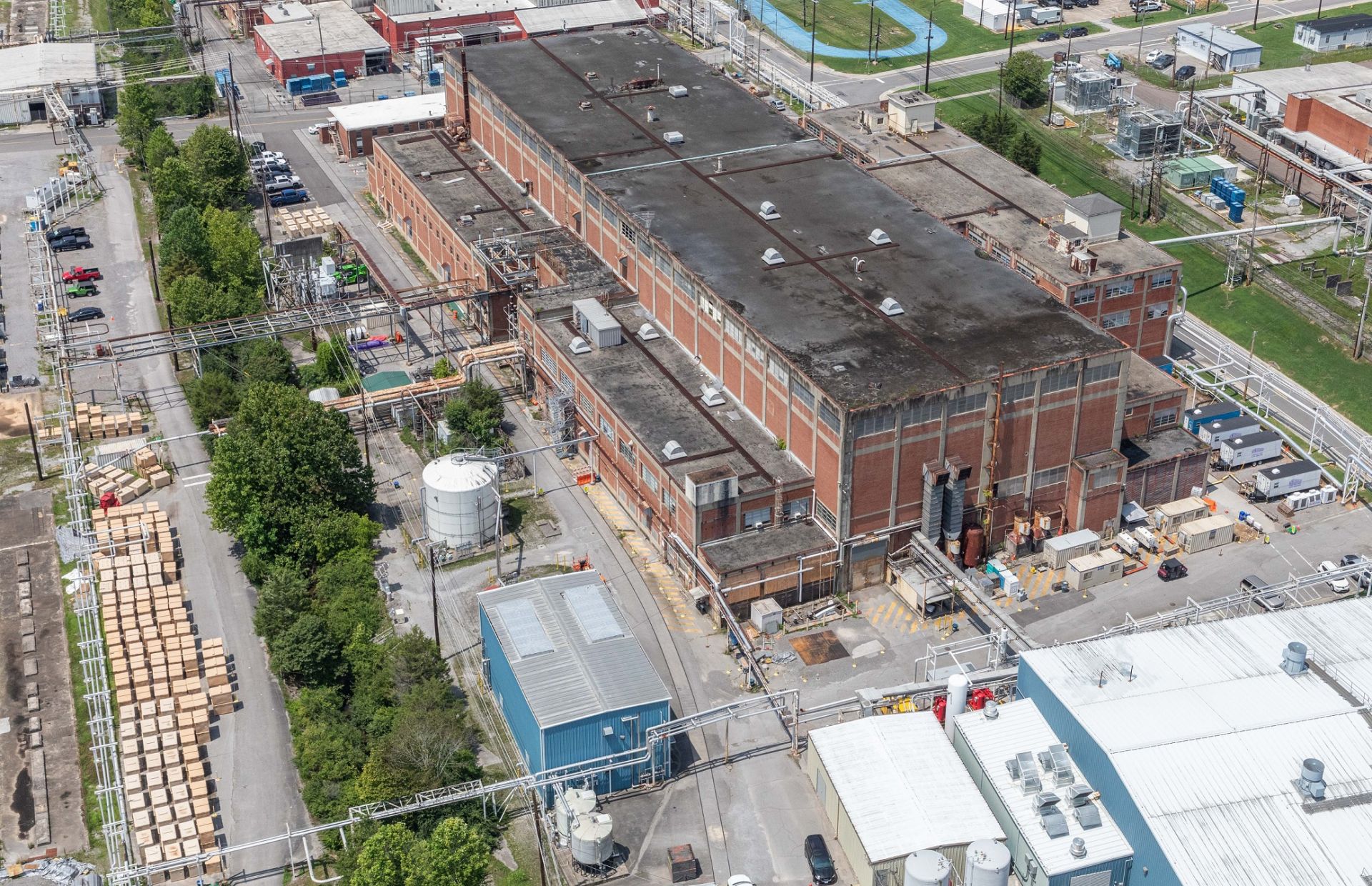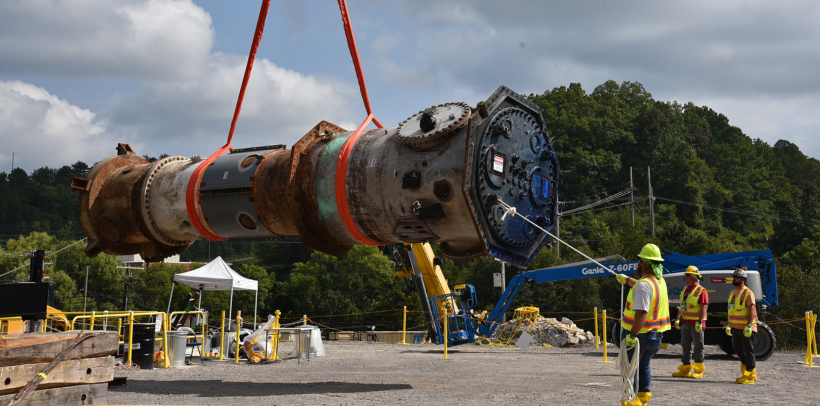Radioisotopes target cancer, improve imaging, and have myriad other medical uses
ORNL radioisotope manufacturing coordinator Jillene Sennon-Greene places a shipment vial of actinium-225 inside the dose calibrator to confirm its activity is within customer specifications. (Photo: Carlos Jones/ORNL, DOE)
On August 2, 1946, 1 millicurie of the isotope carbon-14 left Oak Ridge National Laboratory, bound for the Barnard Free Skin and Cancer Hospital in St. Louis, Mo.
That tiny amount of the radioisotope was purchased by the hospital for use in cancer studies. And it heralded a new peacetime mission for ORNL, built just a few years earlier for the production of plutonium from uranium for the Manhattan Project.
Oak Ridge crews will begin demolition of the 325,000-sqaure-foot Alpha-2 facility this year, marking the first teardown of a former uranium enrichment facility at Y-12. (Photo: DOE)
The Department of Energy announced that its Oak Ridge Office of Environmental Management (OREM) is moving ahead with a slate of projects this year that will alter the Tennessee site’s skyline, remove inventories of nuclear waste, and complete a major phase of cleanup.
UCOR’s Ken Rueter speaks to University of Tennessee students during an engineering colloquium series. (Photo: DOE)
A significant percentage of the workforce at the Department of Energy’s Oak Ridge Reservation in Tennessee is eligible to retire in the next decade, according to the agency. In an effort to address the potential for a staffing shortage, UCOR, the DOE’s Oak Ridge Office of Environmental Management contractor for cleanup activities at the site, is building a consortium with colleges and universities in the region. The collaboration aims to guide more students toward nuclear-applicable careers to build the next generation of workers for Oak Ridge and the nuclear industry at large.
UCOR chemical operator apprentices (seated) take instruction at the Liquid and Gaseous Waste Operations at ORNL. (Photo: DOE)
The Department of Energy’s Oak Ridge Office of Environmental Management cleanup contractor UCOR has increased its ability to recruit employees through a recent partnership with Tennessee’s Roane State Community College.
The Low Intensity Test Reactor structure is lifted from its housing and placed in a specialized carbon metal container for shipment for disposal. (Photo: DOE)
The Department of Energy’s Office of Environmental Management announced it has completed a second of its 2023 priorities at Oak Ridge in as many months with the demolition of the Low Intensity Test Reactor, known as Building 3005, at the Tennessee site.
Watch a video of Building 3005 and its decommissioning here.
Taking part in the Environmental Management Disposal Facility groundbreaking, from left, were Steve Arnette of Jacobs; Mark Whitney of Amentum,; Wade Creswell, a Roane Co., Tenn., executive; Brent Booker of the Laborers’ International Union of North America; Kevin Adkisson of North America’s Building Trades Unions; Jeaneanne Gettle of the EPA; Lt. Gov. Randy McNally; David Salyers of TDEC; Ken Rueter of UCOR; Jay Mullis of OREM; U.S. Rep. Chuck Fleischmann; and DOE-EM’s William “Ike” White. (Photo: DOE)
National, state, and local leaders joined the Department of Energy’s Oak Ridge Office of Environmental Management (OREM) and its lead cleanup contractor, United Cleanup Oak Ridge (UCOR), earlier this month to celebrate the groundbreaking for a new on-site disposal facility at the Oak Ridge Reservation in Tennessee.
Watch a video highlighting the Environmental Management Disposal Facility groundbreaking ceremony here.
Upgrades to the particle accelerator enabling the record 1.7-MW beam operating power at the ORNL’s SNS included adding 28 high-power radio-frequency klystrons (red tubes) to provide higher power for the accelerator. (Photo: Genevieve Martin/ORNL)
The Spallation Neutron Source (SNS) at the Department of Energy's Oak Ridge National Laboratory set a world record when its particle accelerator beam operating power reached 1.7 MW, an improvement on the facility’s original design capability of 1.4 MW, ORNL announced on July 21. That higher power provides more neutrons for researchers who use the Office of Science user facility for materials science investigations.
ORNL has developed an automated metrology system to produce Pu-238 pellets. (Photo: ORNL)
The Department of Energy recently shipped half a kilogram of plutonium oxide pellets from Oak Ridge National Laboratory to Los Alamos National Laboratory, the agency announced July 18, marking the largest such shipment since the DOE restarted domestic plutonium-238 production over a decade ago.
For the first time in 26 years, work crews performed sampling of gaseous byproducts at the MSRE. (Photo: DOE)
A still image from an ORNL video demonstrating the VIPER technology. (Credit: ORNL)
Researchers at Oak Ridge National Laboratory developed a method of using augmented reality (AR) to create accurate visual representations of ionizing radiation, and that technology has just been licensed by Teletrix, a Pittsburgh, Pa.-based firm that develops simulators to train radiological workers and radiological control technicians. ORNL announced the news on May 4.
The UKAEA will provide novel fusion materials to be irradiated in ORNL’s HFIR facility over the next four years. Pictured (from left) are Kathy McCarthy, director of the U.S. ITER Project; Jeremy Busby, ORNL’s associate lab director for fusion and fission energy and science; Mickey Wade, ONRL Fusion Energy Division director; Ian Chapman, chief executive officer of the UKAEA; Cynthia Jenks, ORNL’s associate lab director for physical sciences; and Yutai Kato, ORNL Materials Science and Technology Division interim director.
The Department of Energy’s Oak Ridge National Laboratory (ORNL) and the U.K. Atomic Energy Authority (UKAEA) have formed a strategic research partnership to investigate how different types of materials behave under the influence of high-energy neutron sources. The five-year partnership was announced by ORNL and by the UKAEA on March 13.
















